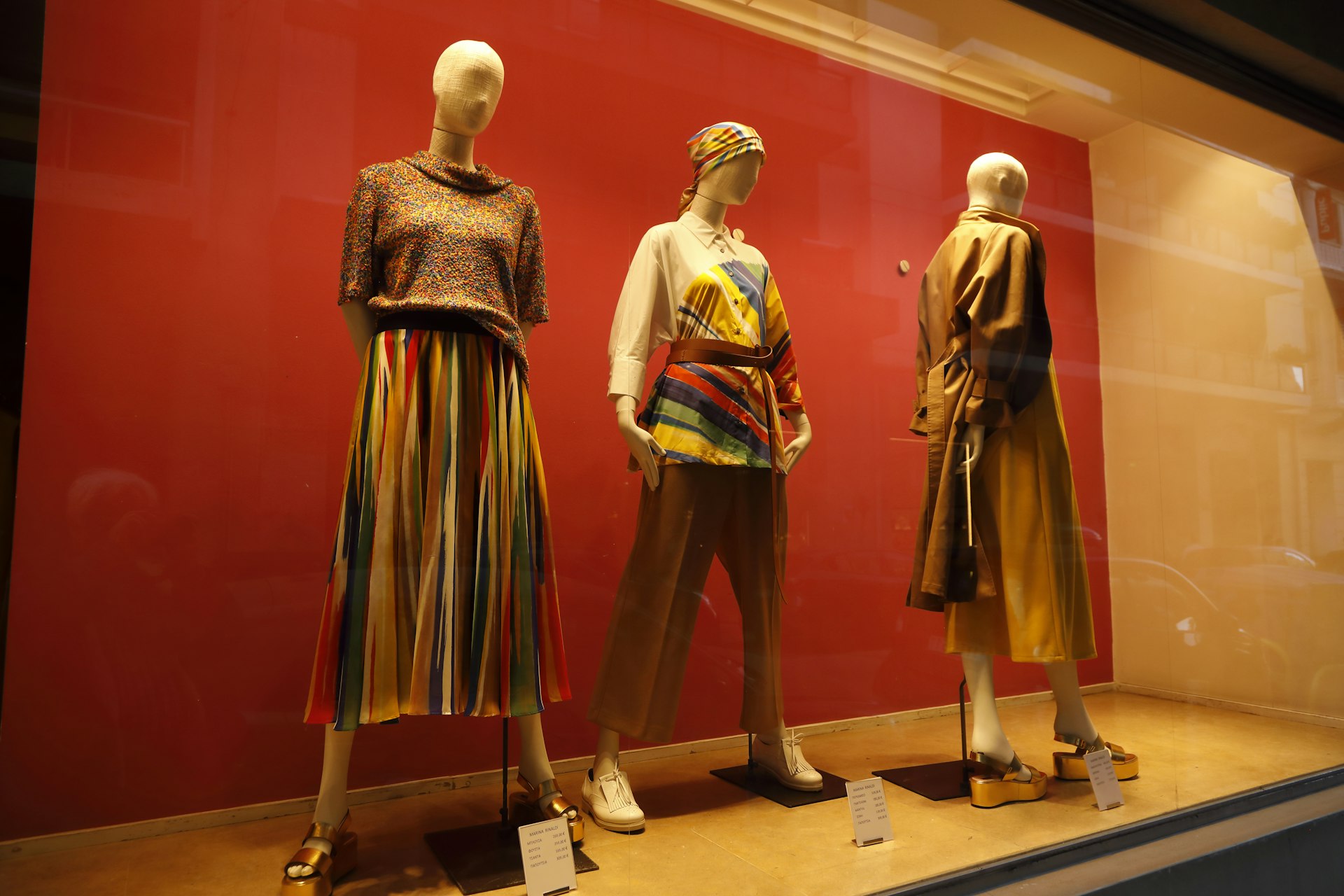Pioneering Sustainable Denim: Innovations Transforming the Fashion Industry

Photo by Brett Jordan on Unsplash
Sustainable Denim: Redefining Fashion’s Most Iconic Fabric
Denim, long celebrated for its durability and timeless style, is undergoing a remarkable transformation as the fashion industry responds to growing environmental concerns. With over a billion pairs of jeans sold annually and the global denim market projected to exceed $113 billion by 2025, sustainability has become a central focus for brands and consumers alike [1] . This article explores the innovations, technologies, and actionable steps shaping the future of sustainable denim.
Understanding Denim’s Environmental Impact
The traditional denim production process carries a heavy environmental footprint. Manufacturing a single pair of jeans can require up to 3,800 liters of water, contributing to water scarcity in vulnerable regions [5] . Furthermore, the denim sector accounts for approximately 1.5% of global carbon emissions, driven by energy-intensive manufacturing and resource extraction [1] . The use of synthetic dyes and chemicals further exacerbates pollution and health risks for industry workers and surrounding communities.
Materials Matter: Choosing Eco-Friendly Fibers
Modern sustainable denim leverages a new generation of materials designed to reduce environmental impact without sacrificing quality or performance. Key innovations include:
- Organic Cotton: Grown without harmful pesticides and synthetic fertilizers, organic cotton reduces soil and water contamination. Look for certifications such as GOTS (Global Organic Textile Standard) to ensure authenticity [2] .
- Recycled Fibers: Many brands now incorporate recycled cotton or polyester, diverting textile waste from landfills and reducing the need for virgin resources.
- Alternative Fibers: Emerging options like hemp and Tencel (lyocell) offer natural strength, breathability, and lower water usage compared to conventional cotton.
- Biodegradable Denim: Research is advancing on plant-based synthetic fibers and fully biodegradable denim fabrics, which could revolutionize end-of-life solutions for garments [1] .
For consumers, selecting jeans labeled with recognized certifications and eco-friendly materials is an actionable way to support sustainable production.
Water-Saving Technologies: Reducing Denim’s Thirst
Given denim’s notorious water usage, brands are investing in cutting-edge techniques to cut consumption:
- Foam-Dyeing and Ozone Treatments: These methods use minimal water and eliminate the need for harsh chemicals, dramatically reducing the environmental impact of coloration and finishing [2] .
- Recycled Water Systems: Some manufacturers have adopted closed-loop water recycling, allowing up to 95% of water used in production to be cleaned and reused [1] .
- Laser and E-Flow Finishing: These technologies use precise, computer-guided techniques to create distressed looks and soft finishes without extensive washing or chemical baths.
Consumers can identify brands with these practices by reviewing company sustainability pages or looking for mentions of water-saving processes on product labels.
Reducing Carbon and Chemical Footprints
Innovative denim brands are tackling their carbon emissions head-on:
- Renewable Energy: Factories powered by solar, wind, or hydroelectricity significantly reduce the carbon footprint of denim production [1] .
- Non-Toxic, Plant-Based Dyes: Instead of petroleum-based chemicals, brands are returning to natural dyes and mineral pigments to minimize water pollution and worker exposure [2] .
- Carbon Capture and Circular Models: Research is ongoing into carbon capture technologies and closed-loop systems, where end-of-life denim is recycled into new fibers, closing the loop on waste.
For actionable steps, customers can prioritize brands that publish transparent sustainability reports or third-party carbon reduction commitments.
Circular Economy: Beyond Ownership to Lifelong Use
The future of sustainable denim is not just about better materials but also about reimagining the garment lifecycle. Circular models include:
- Leasing and Take-Back Programs: Brands like Organsk® and others offer leasing or buy-back options, encouraging consumers to return worn jeans for repair, recycling, or upcycling [2] .
- Repair Services: Extending the life of denim through repairs is one of the most effective ways to reduce overall resource consumption. Many brands now offer in-house or partner repair programs.
- Resale and Vintage: Buying secondhand or vintage jeans is considered the most sustainable choice, as it eliminates the need for new production and keeps garments in use longer [3] .
- Recycling Initiatives: Some companies accept old denim to be shredded and remade into new fabric, insulation, or other products, closing the material loop.
To access these services, visit brand websites or contact customer support for details about return, repair, and recycling programs. When links are not available, consider searching for “[brand name] denim recycling program” or “denim repair service near me.”
Technology-Driven Sustainability: AI and Digital Solutions
Advances in digital technology are optimizing denim’s impact in several ways:
- AI-Aided Fit and Virtual Try-Ons: Artificial intelligence helps brands recommend precise sizing, reducing returns and waste from unsold inventory [2] .
- Virtual Showrooms: Digital showrooms enable buyers to view and customize jeans remotely, minimizing the need for physical samples and travel [3] .
- Made-to-Order Production: By producing jeans only as they are ordered, brands reduce overproduction and excess stock, further curbing waste [2] .
Consumers can benefit by exploring brands with online fit tools and made-to-order options, which may be highlighted on each retailer’s product pages or FAQs.
Trends in Design: Fashion That Lasts
As sustainability becomes a driving force, denim design is evolving:
- Relaxed and Versatile Silhouettes: Wide-leg and straight-cut jeans, along with unisex styles, are gaining popularity for their adaptability and longevity [4] .
- Vintage Washes and Retro Aesthetics: The revival of classic washes and secondhand-inspired looks encourages the use of existing garments and a shift toward less trend-driven consumption [3] .
- Durability: Double-stitching, reinforced seams, and high-quality hardware are prioritized to increase the useful life of each pair of jeans [2] .
To ensure durability, examine product descriptions for material details and construction techniques. Many brands highlight their commitments on sustainability pages and in product FAQs.
How to Access Sustainable Denim Innovations
If you want to make more sustainable denim choices, follow these steps:
- Research brands’ official websites for sustainability policies, certifications, and innovation highlights. Look for sections on materials, water use, and recycling programs.
- Contact customer service to inquire about repair, recycling, or take-back programs. Many companies offer email, phone, or live chat support for these services.
- Use search terms such as “sustainable denim brands 2025,” “GOTS certified jeans,” or “denim recycling near me” to find current options and local initiatives.
- Check for third-party reviews from reputable fashion and sustainability publications. These often provide comparisons, case studies, and consumer feedback.
- Consider secondhand platforms and vintage stores for the most sustainable options, as reusing existing denim has the lowest environmental impact.
For organizations or businesses looking to implement sustainable denim solutions, consult industry trade groups, textile innovation labs, or environmental consultancies specializing in apparel supply chains. Conferences and expos such as the Global Fashion Agenda or Textile Exchange summit may offer networking and educational opportunities.
Potential Challenges and Solutions
Transitioning to sustainable denim is not without obstacles. Common challenges include higher production costs, limited availability of eco-friendly materials, and consumer resistance to higher prices. Brands are addressing these challenges by:

Photo by Sean Driscoll on Unsplash
- Educating consumers on the long-term value and durability of sustainable jeans.
- Collaborating across the supply chain to make green technologies more accessible and cost-effective.
- Offering flexible models such as leasing, repairs, and buy-back schemes to increase value for customers.
For consumers, balancing cost with sustainability may mean investing in fewer, higher-quality garments and utilizing brand recycling or repair programs to maximize each purchase.
Key Takeaways: The Path Forward
Sustainable denim innovations are rapidly reshaping the fashion industry. By choosing eco-friendly materials, supporting water-saving and low-impact manufacturing, and participating in circular economy initiatives, both brands and consumers can help reduce denim’s environmental footprint. For the latest developments and actionable guidance, always consult verified brand resources, reputable environmental organizations, and independent product reviews.
References
- [1] Colorful Socks (2025). Denim Sustainability Statistics 2025 and Future Implications.
- [2] Organsk (2025). Best Sustainable Jeans in 2025: Top Eco-Friendly Brands.
- [3] Calik Denim (2024). What to Expect in 2025 as it Comes to Denim!
- [4] FashionUnited (2025). Denim 2025: Key trends and looks shaping the industry.
- [5] The Good Trade (2025). 15 Sustainable Jeans Brands In 2025.



